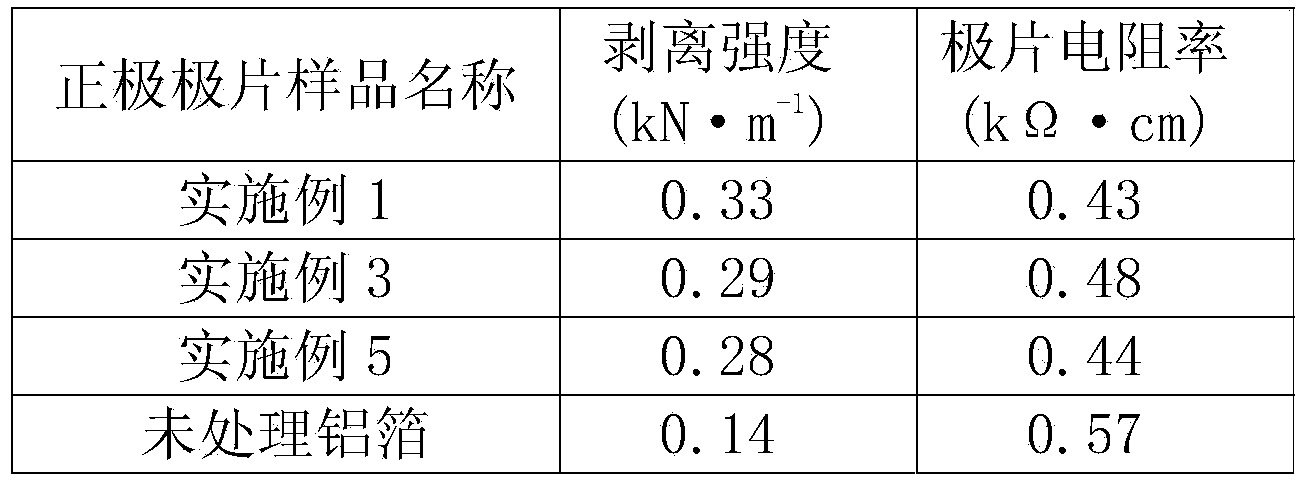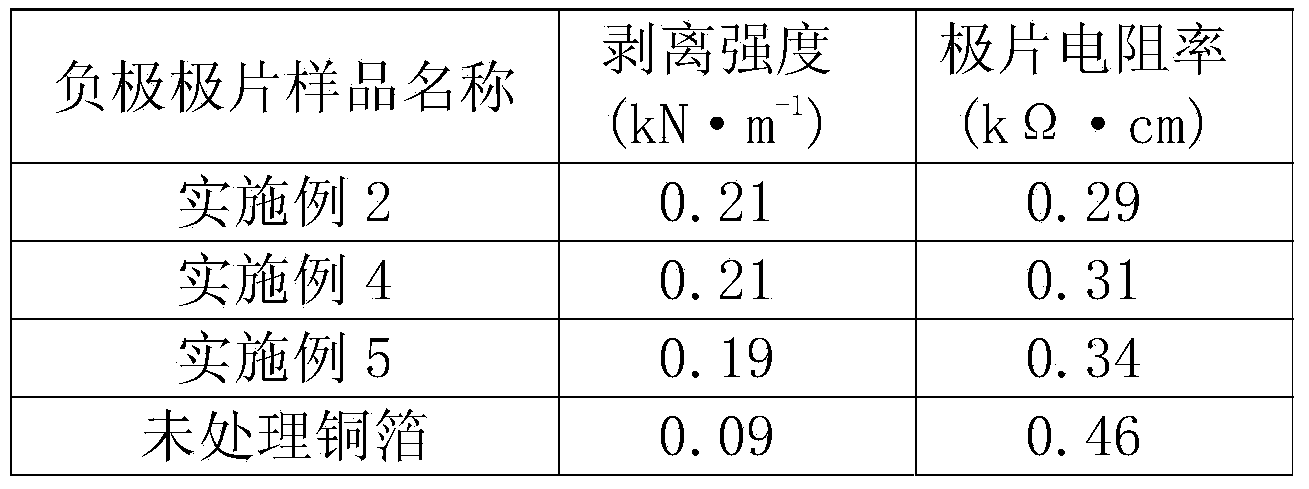Treatment technology for lithium ion battery current collector with conductive polymer film on surface
A conductive polymer and lithium-ion battery technology, applied in battery electrodes, secondary batteries, electrode carriers/collectors, etc., can solve the problems of reduced capacity, adhesive dosage, battery performance contradictions, attenuation, etc., and achieve increased peel strength , Realize large-scale production and reduce the effect of dosage
- Summary
- Abstract
- Description
- Claims
- Application Information
AI Technical Summary
Problems solved by technology
Method used
Image
Examples
Embodiment 1
[0019] Electrochemical deposition of polyaniline film on the surface of positive electrode current collector aluminum foil by cyclic voltammetry
[0020] a. Dissolve the aniline monomer into the acidic solution, and control the aniline concentration to 0.05mol L -1 , adjust the pH of the solution to 4.0 to obtain a supporting electrolyte, and control the temperature at -5 to 5°C.
[0021] b. The aluminum foil of the positive electrode collector of the lithium-ion battery is ultrasonically cleaned by acetone, ethanol and deionized water in sequence, and dried for later use.
[0022] c. In the electrolytic cell, immerse the lithium-ion battery cathode current collector aluminum foil treated in step b into the supporting electrolyte as the working electrode, and use cyclic voltammetry as the electrochemical deposition method. The specific electrochemical parameters are: scanning potential -0.5~1.6V SCE (relative to saturated calomel electrode, SCE), scan rate 10mV s -1 , the nu...
Embodiment 2
[0024] Electrochemical deposition of polyaniline film on the surface of negative electrode current collector copper foil by galvanostatic method
[0025] a. Dissolve the aniline monomer into the acidic solution, and control the aniline concentration to 0.05mol L -1 , adjust the pH of the solution to 4.0 to obtain a supporting electrolyte, and control the temperature at -5 to 5°C.
[0026] b. The copper foil of the negative electrode collector of the lithium-ion battery is ultrasonically cleaned by acetone, ethanol and deionized water in sequence, and dried for later use.
[0027] c. In the electrolytic cell, immerse the lithium-ion battery negative electrode current collector copper foil treated in step b into the supporting electrolyte as the working electrode, and use the constant current method as the electrochemical deposition method. The specific electrochemical parameters are: current density 0.05mA cm -2 , the synthesis time is 10s. After deposition, wash and dry with...
Embodiment 3
[0029] Electrochemical deposition of polypyrrole film on the surface of positive electrode current collector aluminum foil by galvanostatic method
[0030] a. Dissolve the pyrrole monomer into the acidic solution, and control the pyrrole concentration to 0.1mol L -1 , adjust the pH of the solution to 5.5 to obtain a supporting electrolyte, and control the temperature at -5 to 5°C.
[0031] b. The aluminum foil of the positive electrode collector of the lithium-ion battery is ultrasonically cleaned by acetone, ethanol and deionized water in sequence, and dried for later use.
[0032] c. In the electrolytic cell, immerse the lithium-ion battery cathode current collector aluminum foil treated in step b into the supporting electrolyte as the working electrode, and use the constant current method as the electrochemical deposition method. The specific electrochemical parameters are: current density 0.35mA cm -2 , the synthesis time is 20s. After deposition, it is washed and dried ...
PUM
| Property | Measurement | Unit |
|---|---|---|
| Current density | aaaaa | aaaaa |
| Thickness | aaaaa | aaaaa |
| Thickness | aaaaa | aaaaa |
Abstract
Description
Claims
Application Information
 Login to View More
Login to View More - R&D
- Intellectual Property
- Life Sciences
- Materials
- Tech Scout
- Unparalleled Data Quality
- Higher Quality Content
- 60% Fewer Hallucinations
Browse by: Latest US Patents, China's latest patents, Technical Efficacy Thesaurus, Application Domain, Technology Topic, Popular Technical Reports.
© 2025 PatSnap. All rights reserved.Legal|Privacy policy|Modern Slavery Act Transparency Statement|Sitemap|About US| Contact US: help@patsnap.com


